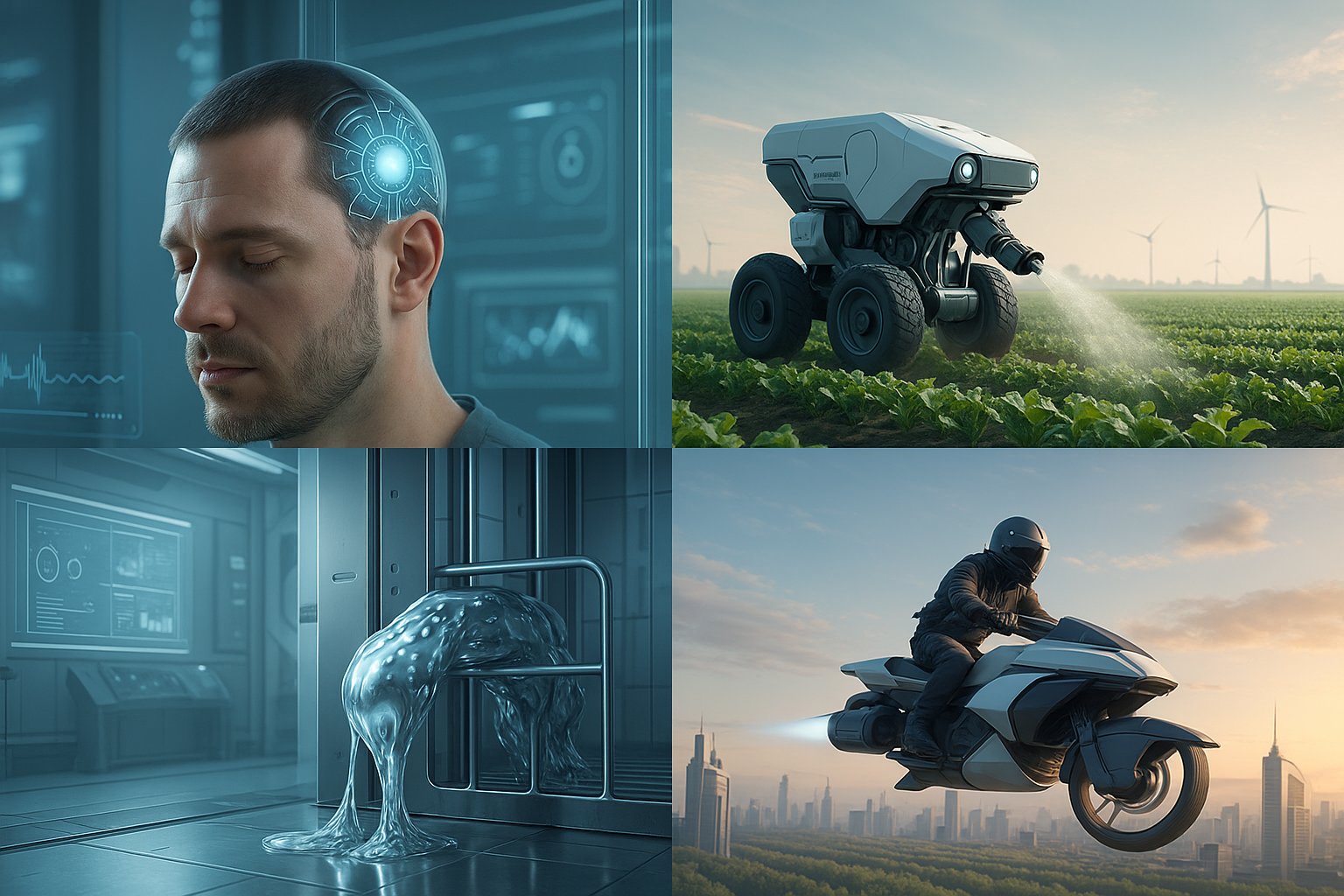From liquid robots to mind-controlled speech, these inventions are challenging our understanding of what’s real and what’s science fiction.
The rapid progress of AI over the past few years has unsettled the global population, reaching a point where it is extremely difficult to say with certainty whether certain content has been created by AI or not.
We are confronted with this phenomenon through photos, video and audio recordings that can easily confuse us and force us to question our perception of reality.


And while the public often focuses on deepfakes, at the same time we are witnessing inventions and patents emerging around the world that deserve admiration, but also spark important reflection: are we nearing, or have we already crossed, the ethical red line?
For these and many other reasons, in a world where the visual and functional differences between science fiction and reality have almost disappeared, the latest inventions come as a shock.
We are now at a point where we are facing technologies that force us to redefine what we mean by the word ‘reality’.
Neuralink: Crossing the boundary between brain and machine
Amyotrophic lateral sclerosis (ALS) is a rare neurological disease caused by damage and degeneration of motor neurons—nerve cells in the brain and spinal cord. This damage disrupts the transmission of nerve impulses to muscles via peripheral nerves, leading to a progressive loss of muscle function.
However, the Neuralink chip, developed by Elon Musk’s company, has helped one patient type with their mind and speak using their voice. This breakthrough opens the door to a new form of communication where thoughts become direct interactions.
Liquid robot from South Korea
Scenes from sci-fi films are becoming reality, and in this case (thankfully), a liquid robot has a noble purpose—to assist in rescue missions and be applied in medicine.
Currently in the early prototype stage, it has been demonstrated in labs through a collaboration between MIT and Korean research institutes.
ULS exoskeleton as support for elderly care
Healthcare workers and caregivers in China have had their work greatly simplified thanks to the ULS Robotics exoskeleton, weighing only five kilograms but enabling users to lift up to 30 kilograms.
This represents a leap forward in caring for people with limited mobility, while also increasing safety and efficiency. Commercial prototypes have been tested in hospitals and industrial environments.
Agrorobots: Autonomous crop spraying
Another example from China that has been in use for several years. Robots equipped with AI perform precise crop spraying. The system analyses pests and targets them without the need for human presence, reducing potential health risks.
The application has become standardised, with expectations for further expansion and improvement in the near future.
The stretchable battery of the future
Researchers in Sweden have developed a flexible battery that can double in length without losing energy, making it ideal for wearable technologies.
Although not yet commercially available, it has been covered in scientific journals. The aim is for it to become a key component in bendable devices, smart clothing and medical implants.
Volonaut Airbike: A sci-fi vehicle takes off
When it comes to innovation, the Volonaut Airbike hits the mark perfectly. Designed to resemble a single-seat speeder bike from Star Wars, it represents a giant leap toward personal air travel.
Functional prototypes exist, but testing remains limited due to high production costs and regulatory hurdles related to traffic laws. Nevertheless, the Polish company behind it remains committed to this idea, and it will be exciting to follow its progress.
NEO robot: The humanoid household assistant
A Norwegian company has been developing a humanoid robot capable of performing household tasks, including gardening chores like collecting and bagging leaves or grass.
These are among the first serious steps toward domestic humanoid assistants. Currently functioning in demo mode, the robot has received backing from OpenAI.
Lenovo Yoga Solar: The laptop that loves sunlight
If you find yourself without a charger but with access to direct sunlight, this laptop will do everything it can to keep you powered. Using solar energy, 20 minutes of charging in sunlight provides around one hour of video playback.
Perfect for ecologists and digital nomads. Although not yet commercially available, it has been showcased at several major tech expos.
What comes next: The need for smart regulation
As technology races ahead, regulation must catch up. From neurotech to autonomous robots, each innovation raises new questions about privacy, accountability, and ethics.
Governments and tech developers alike must collaborate to ensure that these inventions remain tools for good, not risks to society.
So, what is real and what is generically created?
This question will only become harder to answer as time goes on. But on the other hand, if the technological revolution continues to head in a useful and positive direction, perhaps there is little to fear.
The true dilemma in this era of rapid innovation may not be about the tools themselves, but about the fundamental question: Is technology shaping us, or do we still shape it?
Would you like to learn more about AI, tech and digital diplomacy? If so, ask our Diplo chatbot!
